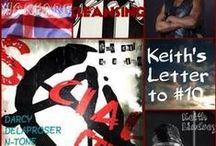A subject of historical discussion the subject is almost never referred to in Ireland

Irish Emigrants About to Set Sail for America from Liverpool, circa 1847
Photo by Google Images
The term 'Black Irish' has commonly been in
circulation among Irish emigrants and their descendants for centuries.
As a subject of historical
discussion the subject is almost never referred to in Ireland. There
are a number of different claims as to the origin of the term, none of
which are possible to prove or disprove.
'Black Irish' is often a description of people of Irish origin who had dark features, black hair, dark complexion and eyes.
A
quick review of Irish history reveals that the island was subject to a
number of influxes of foreign people. The Celts arrived on the island
about the year 500 B.C.
Whether or not
this was an actual invasion or rather a more gradual migration and
assimilation of their culture by the natives is open to conjecture, but
there is sufficient evidence to suggest that this later explanation is
more likely.
The next great influx came from Northern
Europe with Viking raids occurring as early as 795 A.D. The defeat of
the Vikings at the Battle of Clontarf in the year 1014 by Brian Boru
marked the end of the struggle with the invaders and saw the subsequent
integration of the Vikings into Irish society. The migrants became
'Gaelicized' and formed septs (a kind of clan) along Gaelic lines.
The Norman invasions of 1170 and 1172 led by Strongbow saw yet another wave of immigrants settle
in the country, many of whom fiercely resisted English dominance of the
island in the centuries that followed. The Plantation of Ulster in the
seventeenth century saw the arrival of English and Scottish colonists in
Ulster after the 'Flight of the Earls'.
Each
of these immigrant groups had their own physical characteristics and
all, with the exception of the Ulster Planters, assimilated to some
degree into Irish society, many claiming to be 'more Irish than the
Irish themselves!'
The Vikings were
often referred to as the 'dark invaders' or 'black foreigners'. The
Gaelic word for foreigner is 'gall' and for black (or dark) is 'dubh'.
Many
of the invaders families took Gaelic names that utilized these two
descriptive words. The name Doyle is in Irish 'O'Dubhghaill' which
literally means 'dark foreigner' which reveals their heritage as an
invading force with dark intentions.
The
name Gallagher is 'O Gallchobhair' which translates as 'foreign help'.
The traditional image of Vikings is of pale-skinned blond-haired
invaders but their description as 'dark foreigners' may lead us to
conclude that their memory in folklore does not just depend on their
physical description.
The Normans were
invited into Ireland by Dermot McMurrough and were led by the famous
Strongbow. Normans are ultimately of French origin where black haired
people are not uncommon. As with the Vikings these were viewed as a
people of 'dark intentions' who ultimately colonized much of the Eastern
part of the country and several larger towns.
Many
families however integrated into Gaelic society and changed their
Norman name to Gaelic and then Anglo equivalents: the Powers, the
Fitzpatricks, Fitzgeralds, Devereuxs, Redmonds.

No comments:
Post a Comment